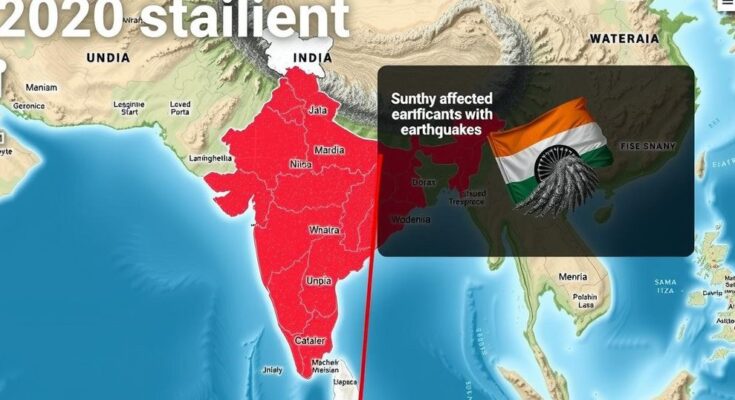A magnitude 7.1 earthquake struck Bihar, India, on January 7, 2025, following seismic activity in southern Tibet. An analysis from 1990 to early 2024 ranks India seventh in major earthquakes, with significant risks due to its geographical vulnerabilities. Historical events underscore the need for preparedness against future earthquakes, particularly in the seismic-prone Himalayan region.
On January 7, 2025, a series of significant earthquakes rocked southern Tibet, particularly near the Nepal border. A notable tremor measuring 7.1 in magnitude impacted northern India, especially Bihar. This earthquake marked the most substantial seismic event in the region since the devastating 2015 Nepal earthquake that resulted in nearly 10,000 deaths. The frequency and intensity of earthquakes in Asia highlight the continent’s vulnerability to seismic activity, with India being particularly susceptible due to its geographical characteristics.
A comprehensive analysis of major earthquakes from 1990 to early 2024 indicates that among countries, India ranks as the seventh most affected by significant earthquakes, with 58 recorded during this period. The United States Geological Survey (USGS) states that Indonesia leads globally with about 2,212 earthquake occurrences (magnitude 4 or higher), followed by China, which has recorded 186 major earthquakes causing substantial damage.
India’s geographical positioning along the convergence of various tectonic plates, coupled with a diverse geological structure, renders it vulnerable to earthquakes. Approximately 59% of India’s land area is at risk for moderate to severe seismic events, primarily affecting the Himalayan region, which is notorious for its potential to experience powerful earthquakes exceeding 8.0 in magnitude. Historical records show that India has faced several significant quakes in the past century, notably the Shillong earthquake in 1897 and the Bihar-Nepal earthquake in 1934.
Globally, the data from the National Oceanic and Atmospheric Administration (NOAA) indicates that while China has the highest number of major earthquakes, Indonesia, Iran, and Japan closely follow, with India holding a prominent position among the most affected countries. This positioning necessitates increased awareness and preparedness for future seismic activities within the nation, reflecting the ongoing risks presented by the geographical and structural factors distinctive to India.
The article discusses India’s vulnerability to earthquakes, emphasizing the country’s ranking among nations affected by significant seismic events. It highlights recent seismic activity in India following a series of earthquakes in southern Tibet and explains the contributing geographical factors that make India susceptible to such events. Furthermore, it compares India’s earthquake statistics with those of other countries based on data collected over the past few decades, illustrating the challenges posed by natural disasters in the region.
In conclusion, India stands as the seventh most earthquake-prone country in the world, facing significant risks due to its location along various tectonic plates. The recent seismic activities emphasize the necessity for continued monitoring and preparedness. With a historical backdrop of devastating earthquakes, it remains imperative for India to enhance its resilience against future seismic occurrences that could have profound humanitarian and economic impacts.
Original Source: indianexpress.com




